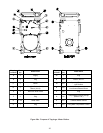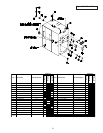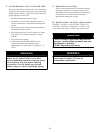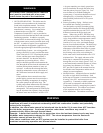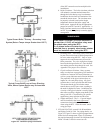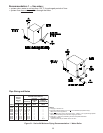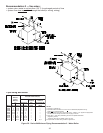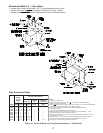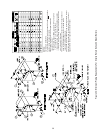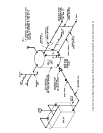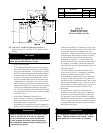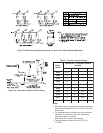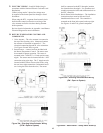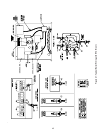
38
NOTICE
When possible, domestic hot water production should utilize a dedicated boiler(s). This will
allow the other boiler(s) to be shut down and isolated during the summer months. If the boiler
load is shared between heating and domestic hot water, then one needs to determine if a hot
water priority is required. If a priority is not selected, erratic domestic hot water production may
result during the beginning and end of every heating season. Conversely, a priority for domestic
hot water production may cause a significant heating zone activation delay, in an improperly
balanced system. Parallel piping conversions may require isolation from the heating system to
prevent system flow influence on DHW performance. Consult a qualified system heating
professional to design for the proper application.
1. Hot Water Boiler/Indirect Water Heater – The use
of indirect water heaters for domestic hot water
generation is common. Consider prioritizing the
generation of domestic hot water using an indirect
water heater (See notice below).
a. Dedicated Boiler for DHW Production – If the
boiler(s) is (are) dedicated to production of
domestic hot water production, the diverting
valve is not necessary. (see Appendix A.11 for
details) However, the RTC should be used,
along with a boiler circulation loop that includes
a boiler circulator and return sensor. The boiler
circulator and piping must be sized to circulate
at a minimum, the flow rate required for a 40 ºF
∆T application. See Appendix B for circulator
details. The circulator for the domestic hot water
system is separate from the boiler circulator.
GNINRAW
tsumpooLdroftraHdetcurtsnocylreporpA
maetsnruterytivargllanodellatsnieb
noderiuqertonsipooLdroftraH.smetsys
.smetsysnruterdepmup
L. BOILER PIPING, DOMESTIC HOT WATER
(DHW) APPLICATION – This section of the manual
identifies the boiler piping details when domestic hot
water is required. The two methods described for
domestic hot water production are through the use of
an indirect hot water heater or tankless coils. If a shell
and tube or plate heat exchanger is desired, follow
the instructions for the indirect water heater. Always
consult the heat exchanger manufacturer for specific
instructions and limitations.
NOTICE
DO NOT use the boiler circulator as an
indirect domestic hot water system
circulator.
b. Shared Boiler for DHW Production – If the
boiler(s) is(are) shared between the heating
system and the production of domestic hot
water, the diverting valve and all of the RTC
components should be used. The piping
arrangement is different between a system
that utilizes the outdoor reset feature vs. one
that doesn’t. See Appendix A for various
applications. If the outdoor reset feature of
the RTC is used, the domestic hot water piping
is part of the boiler loop, independent of the
diverting valve. Although this bypasses the
protection devices of the RTC system, the
volume and temperature conditions of a DHW
system presents no deleterious impact on
the boiler. This prevents a reset system loop
temperature from affecting DHW production.
Multiple boiler applications, utilizing an indirect
water heater arrangement, require the use of
a sequencer and connection to the indirect
water heater as a load on the secondary loop.
An outdoor reset function for multiple boiler
applications with DHW, require a DHW priority
or reset override. Consult your sequencer
manufacturer for recommendations.
2. Hot Water Boiler/Tankless Coil – Tankless coils,
mounted into the side of boilers, have been
used successfully for many years. Tankless
coils may still be used in single and multiple
boiler applications. (See Appendix A for typical
applications.)



